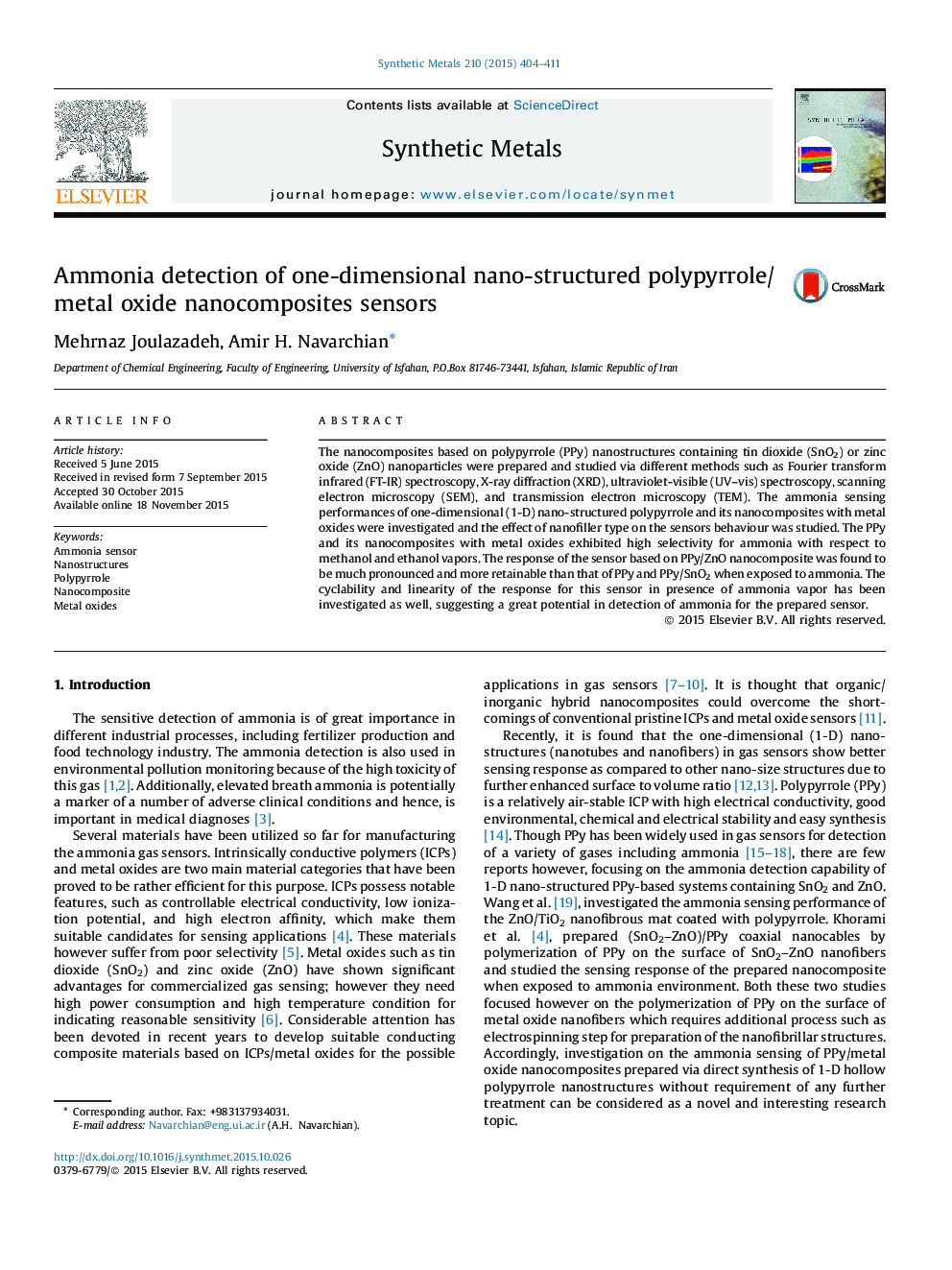| Article ID | Journal | Published Year | Pages | File Type |
|---|---|---|---|---|
| 1440345 | Synthetic Metals | 2015 | 8 Pages |
•Nanotubular morphology is obtained for polypyrrole in presence of ZnO nanoparticles.•SnO2 seemed to prohibit the template degradation resulting in a fibrillar morphology for PPy.•The higher doping state in the case of PPy/ZnO results in more pronounced response in presence of ammonia.•The performance of PPy/ZnO-based sensor is desirable for ammonia detection applications.
The nanocomposites based on polypyrrole (PPy) nanostructures containing tin dioxide (SnO2) or zinc oxide (ZnO) nanoparticles were prepared and studied via different methods such as Fourier transform infrared (FT-IR) spectroscopy, X-ray diffraction (XRD), ultraviolet-visible (UV–vis) spectroscopy, scanning electron microscopy (SEM), and transmission electron microscopy (TEM). The ammonia sensing performances of one-dimensional (1-D) nano-structured polypyrrole and its nanocomposites with metal oxides were investigated and the effect of nanofiller type on the sensors behaviour was studied. The PPy and its nanocomposites with metal oxides exhibited high selectivity for ammonia with respect to methanol and ethanol vapors. The response of the sensor based on PPy/ZnO nanocomposite was found to be much pronounced and more retainable than that of PPy and PPy/SnO2 when exposed to ammonia. The cyclability and linearity of the response for this sensor in presence of ammonia vapor has been investigated as well, suggesting a great potential in detection of ammonia for the prepared sensor.
